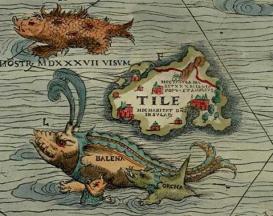In 1539, the Catholic Swedish priest Olaus Magnus published a large map of Scandinavia, the Baltic region, and the North Sea. His Carta Marina was published in Venice, where Olaus spent an important part of his more than 30 years in exile: He had come as an envoy to the Pope, but was eventually stranded, unable to return to a Sweden that had become Lutheran during his absence. The map was unprecedented in its geographical exactitude and its wealth of information on history, politics, anthropology, and natural history. It also presented an image of Northern Europe in religious turmoil: the rich imagery of the map was a set of statements on and revelations of the battle between Lutheranism and Catholicism. The North could be interpreted as an analogy to the strife within Western Christendom.
Olaus also wanted to provide the map with a substantial accompanying text. As it turned out, this became A History of the Northern Peoples, a huge work in 22 books, published only in 1555. At this time, the religious division of Europe was a fait accompli, and the epistemological foundation of the map was no longer valid. Consequently, the book had to renegotiate the structuring principles of the knowledge of the North. The object of this research project was to study the dynamic relationship between the map and the text as an example of the shifting epistemologies of the Renaissance and as an event in the history of the factual. The material also shows how the elements of nature travel between different epistemological and religio-political settings.

